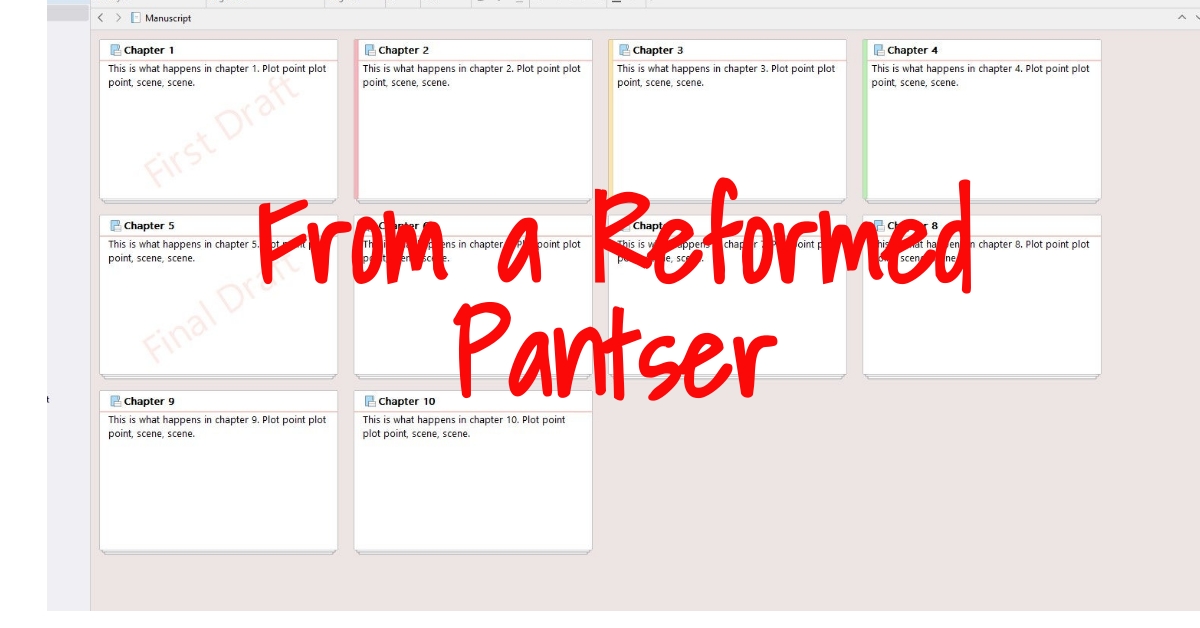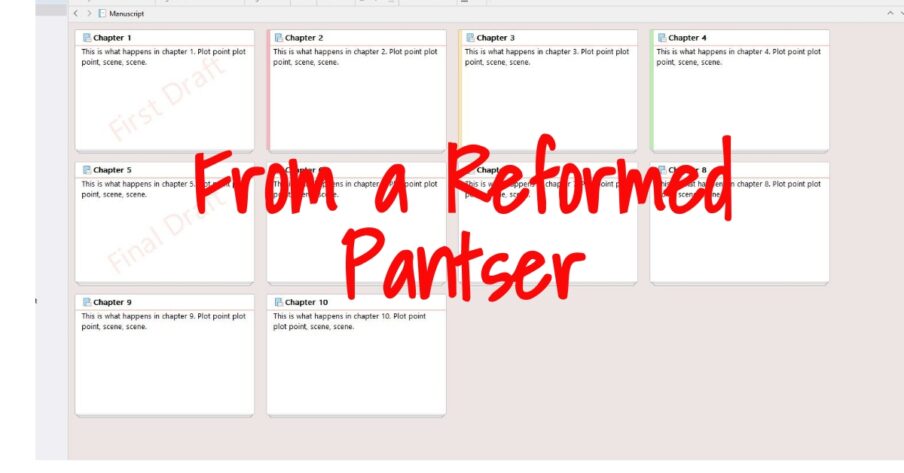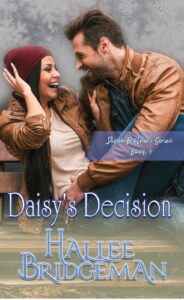by Hallee Bridgeman, @halleeb 
I used to be a “panster” – that is: fly by the seat of my pants. I would sit down and type, “Chapter 1,” and that would be the beginning of my thinking about this book. I wrote seven novels this way. Occasionally, I’d write myself into a wall and have to backtrack, but for the most part, the story came alive as I wrote. I tended to picture a pivotal scene in my head and write to that. Once I reached it, another scene came alive and I’d write to it, etc.
I loved the discovery of the characters, the surprise as scenes unfolded, the experience of writing the book almost as if I got to experience as reading the book. I thought I’d never be able to plot because that unfolding of the story wouldn’t happen and I couldn’t get excited about any of it. When I wrote my Virtues and Valor series, I had to shift the way I wrote. I had eight books all about the same event told from eight different points of view. I needed to plot this entire series so that I didn’t drop a key plot point along the way. It wasn’t easy, changing the way I think as I write, but I discovered that I still imagine a scene and plot toward it versus write toward it.
Back then, I just created a document and said, “In chapter 1, this happens. In chapter 2, this happens,” all the way to the end. I found out, as I did this, that I still got wrapped up in the story. I still visualized the scenes as if they played out in front of me. I still got to know my characters in a beautiful way that I thought could only come from experiencing each scene with them.
I bought Scrivener one year during a NaNoWriMo sale and tried to use it, but found it just too difficult to learn at that time. For almost an entire year, it sat on my computer unused. Then I finished several big projects and had some time to devote to learning something new. I watched a few YouTube videos, and the program came alive for me.

I LOVE plotting with Scrivener. I’ve used it exclusively for about five years. I like the notecard bulletin board feature and use it for plotting. I still say, “In this chapter, this happens,” but it’s not a line-item on a Word document; it’s a notecard on a “bulletin board.”
With Scrivener, I can even move the cards around, color-code the cards, or label them, which is what I would do if I was using actual notecards on an actual cork board. Once I have the entire book plotted in my way of writing toward the next big, pivotal scene, I can sit back and look at the entire novel. I can color code scenes to reflect the POV for that scene and see if I need to shift things around to make it a more interesting read for my readers.
I’ve even been known to see a hole where I’ve just done action/action/action plot/plot/plot – and there needs to be a lull, a “filler” for the plot, a few scenes that are designed just to bring the reader closer to the characters so that those plots/action scenes have more of an emotional impact on the reader.
I know a lot of “pantsers” who say they could never plot, but as a reformed pantser, I’m here to tell you that my books are better fleshed out, my stories are stronger, and I can write faster. Everyone’s brain is different. Scrivener completely worked for me and really opened up the concept of plotting. If you’ve never tried plotting because you don’t think it will work for you, I encourage you to try! You may find that you just need to discover the way that tickles your brain in the perfect manner and lets the story come alive for you the same way it would if you would cold-writing a scene.

With nearly a million sales, USA Today bestselling author Hallee Bridgeman writes action-packed romantic suspense focusing on realistic characters who face real-world problems. Her work has been described as everything from refreshing to heart-stopping exciting and edgy. Hallee has served as the Director of the Kentucky Christian Writers Conference, President of the Faith-Hope-Love chapter of the Romance Writers of America, is a member of the American Christian Fiction Writers (ACFW), the American Christian Writers (ACW), and Novelists, Inc. (NINC). An accomplished speaker, Hallee has taught and inspired writers around the globe, from Sydney, Australia, to Dallas, Texas, to Portland, Oregon, to Washington, D.C., and all places in between. Hallee loves coffee, campy action movies, and regular date nights with her husband. Above all else, she loves God with all of her heart, soul, mind, and strength; has been redeemed by the blood of Christ; and relies on the presence of the Holy Spirit to guide her.

